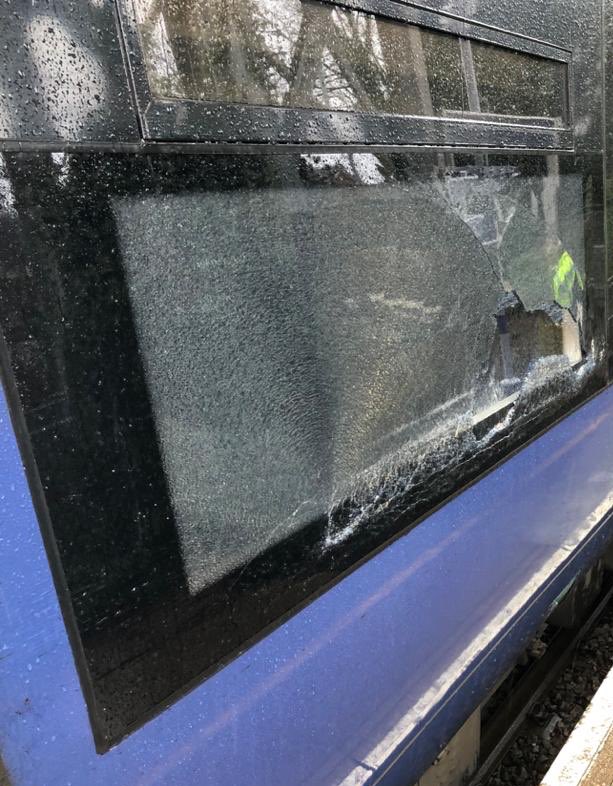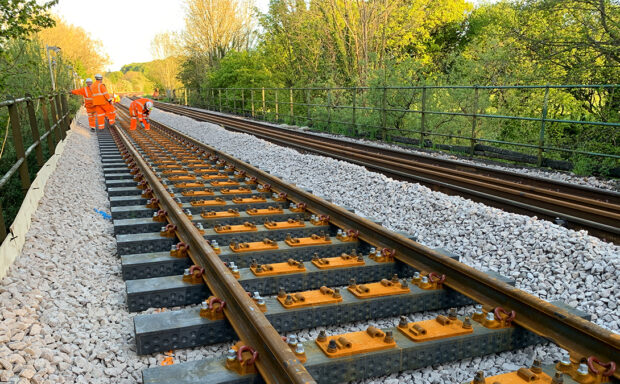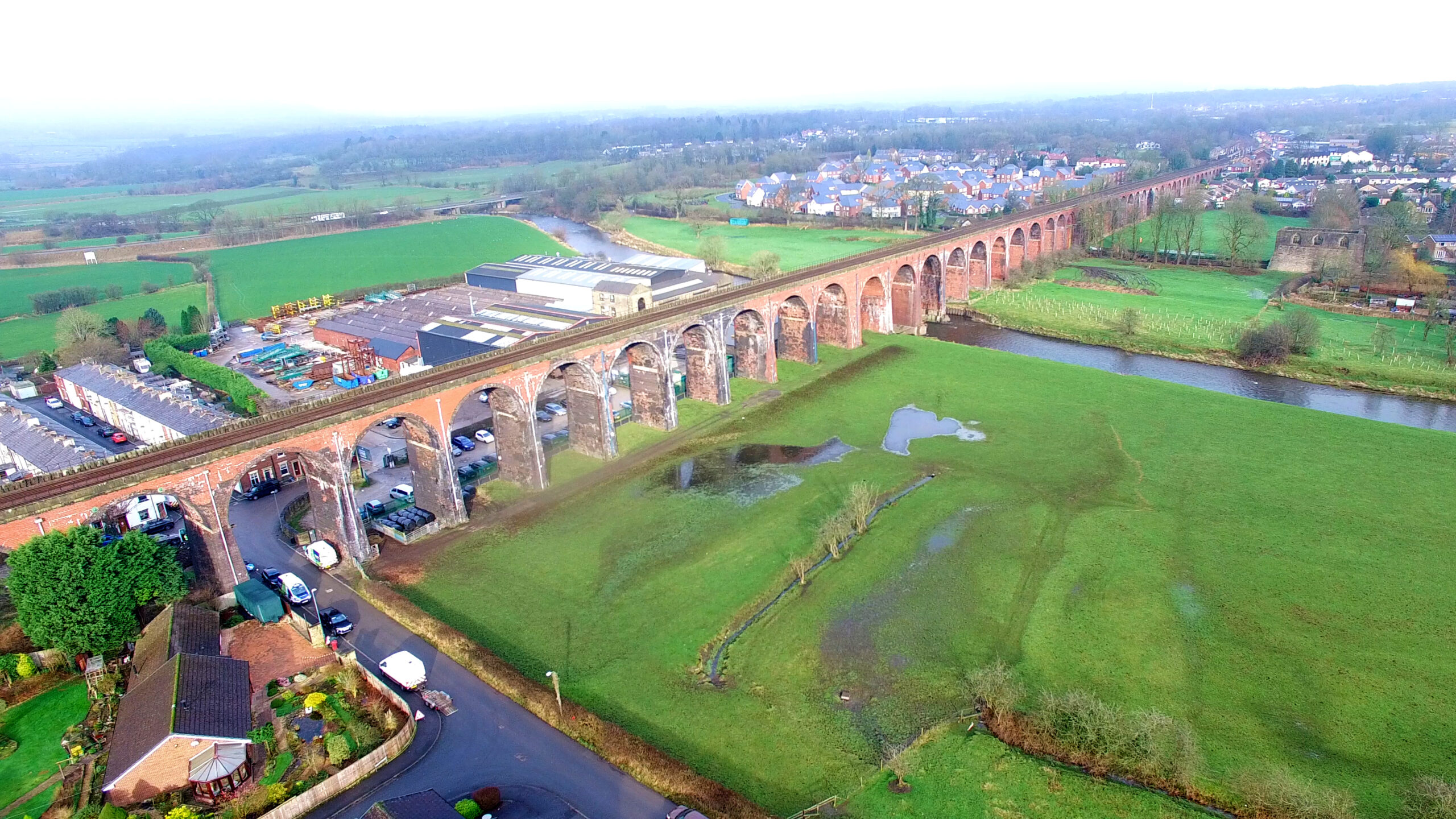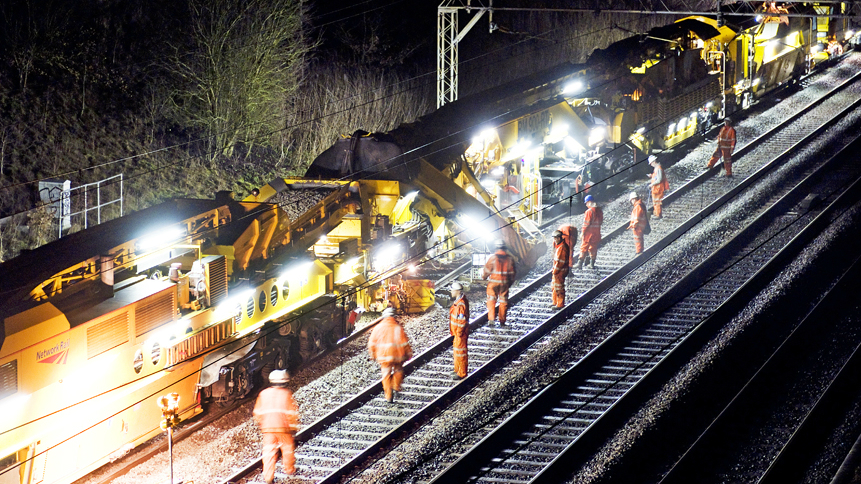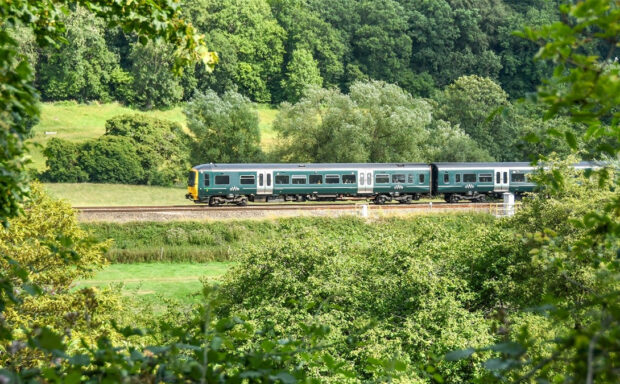This weekend, Storm Dennis caused widespread disruption to the railway – just days after Storm Ciara. Our teams are working around the clock to respond to problems caused by the severe weather and get passengers moving safely.
Please check National Rail Enquiries for up-do-date travel information before you start your journey.
We know delays are frustrating and we do everything we can to avoid them but our priority is always to keep people safe. Sometimes this means imposing temporary speed restrictions (slowing down trains) or closing certain lines entirely to keep passengers safe.
We also prepare to clear lines of any debris such as trees blown onto the railway, inspect any damage and start repairs if possible.
Here are just some of the challenges of Storm Dennis:
Flooding:
The heavy rain has caused flooding across the country – as of Monday, hundreds of flood warnings remained in Britain. Our air operations team took these pictures near Church Fenton in North Yorkshire and Temple Hirst Junction near Doncaster:
Floodwater can dislodge ballast – the stones which support the track – and cause damage to lineside electrical equipment. Any debris that has washed up on the railway also needs to be removed. We must complete all this work before restoring train services.
Severe flooding closed some parts of the railway, such as all lines to and from Rotherham Central station. Our team pumped water away from the railway but the sheer volume of water meant the lines had to close:
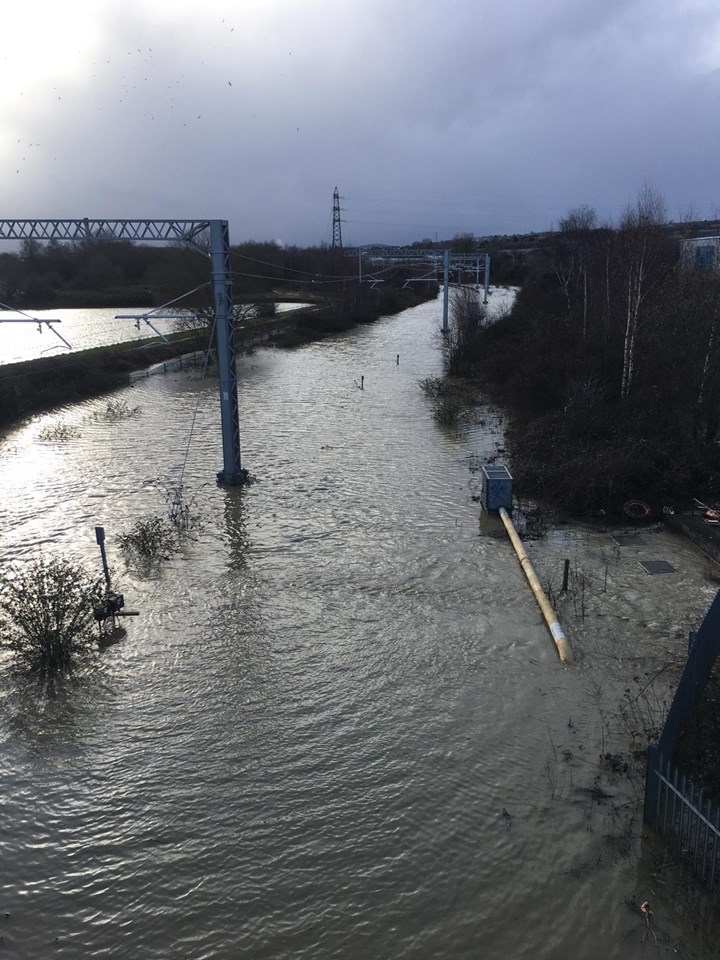
Elsewhere, flooding at Sway in Hampshire meant a reduced number of train services between Winchester and Waterloo, and passengers faced delays between Penrith and Oxenholme in Cumbria.
We had to close the line between Stirling and Dunblane because of high and fast-flowing water at Mill O’Keir Viaduct near Dunblane. It was too dangerous for our engineers to get in a boat to look closely at the problem so an abseiling engineer descended from track level to inspect the bridge. He confirmed it was safe to reopen the railway:
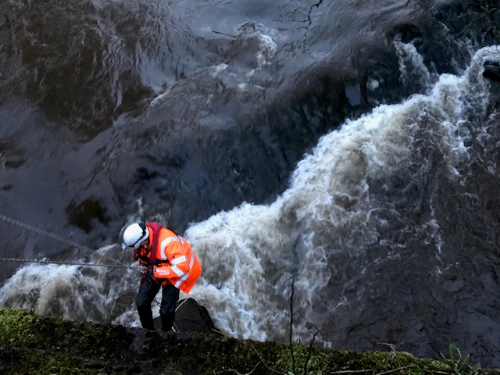
When the railway floods, water blocks the lines and debris, silt and mud make their way onto the track but they’re only part of it. The lasting damage that flood water can cause to infrastructure can lead to ongoing repair work that takes days, weeks or even months.
Meanwhile, flooding can affect the signalling system, which tells trains if it is safe to move around the railway. Find out how severe weather affects the components of a signalling system by watching this video:
Read more about how storms and flooding affect the railway.
Landslips
Landslips – or landslides – occur after very heavy rain. We’ve dealt with multiple landslips in recent months, including one near East Grinstead in West Sussex on December 28; Storm Ciara last weekend worsened the damage, which we are still trying to fix permanently.
This weekend, at Eynsford in Kent, a landslip has led to slow-running trains to keep passengers safe – the water running onto the line hit the live rail, which powers trains in South East England:
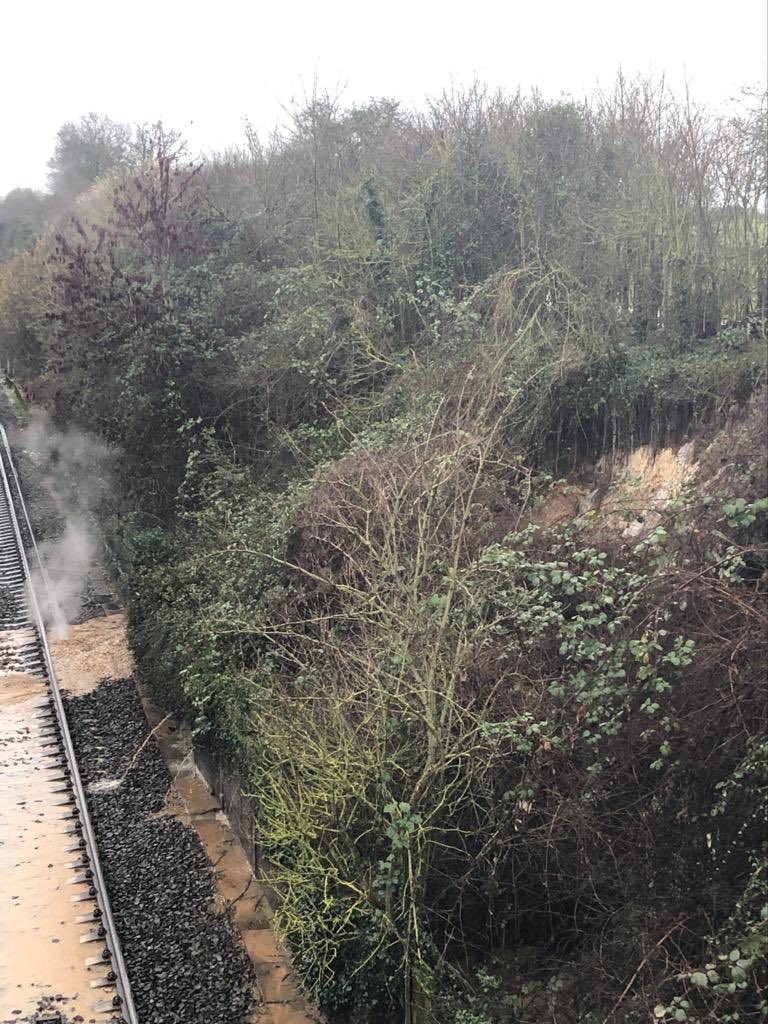
Once the water had slowed to a trickle we needed to shovel away muck from around the live rail. A 5mph speed restriction remained in the London-bound direction, causing delays of up to 10 minutes per train.
Another storm hasn’t made repairs to existing landslips easy but our team at Bexleyheath have continued a big project over the past week to shore up the land by the railway despite the bad weather.
Overhead power lines (OLE)
Overhead power lines are the cables above the track that power electric trains in most of the country. The storm has affected them, from trees and objects on the OLE to water gushing over them – like at Bishopton in Scotland.
We cleared out the aqueduct over the railway at Bishopton to get the water flowing normally and not over the track. We have since re-energised the overhead lines – which have 25,000 volts running through them – and reopened the line to trains:
Strong winds can badly damage OLE, like between between Runcorn and Ditton in Cheshire, where we set out repairing the equipment.
OLE problems can arise because of power supply failure or a mechanical problem, such as the wire or other parts being displaced from the gantry.
In this case, no trains can run until the broken equipment is cleared, then diesel trains can run and if the affected part is short enough electric trains can coast past. We’ll carry out the repairs overnight to reduce disruption if possible.
Find out more about OLE here.
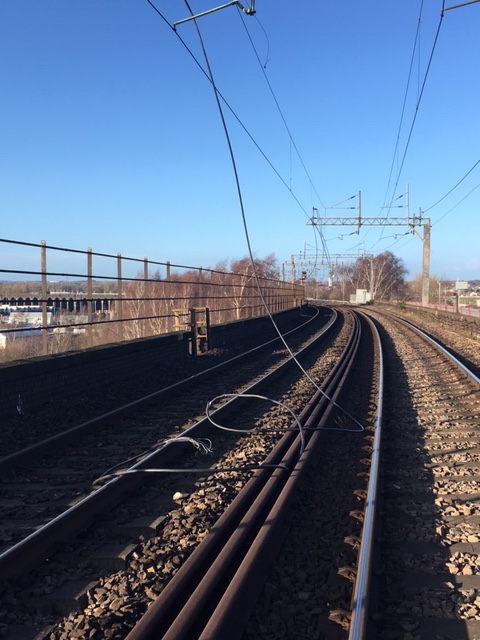
Vegetation
During severe weather we often have to clear the railway of trees that have blown onto the tracks. Our teams head out in strong winds and heavy rain with chainsaws to clear the debris as quickly as possible:
Trees sometimes damage trains, like this one at Longfield in Kent over the weekend:
